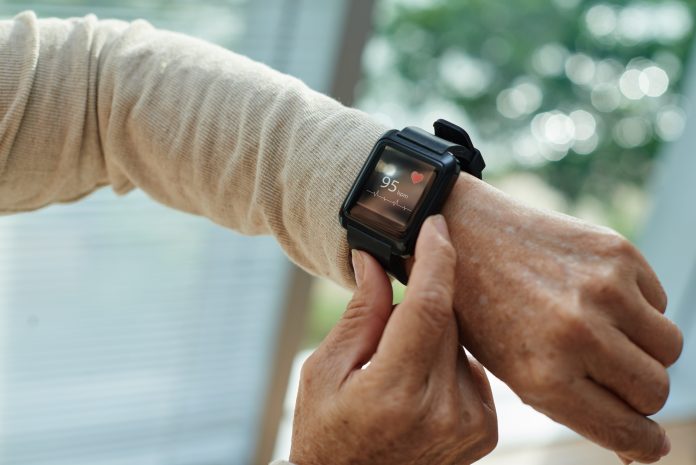Paul Berney, CMO at connected care platform Anthropos, explores how performance analysis, used to keep athletes healthy, can also be used to help older people stay healthier for longer
As the Paralympics draws to a close, not only has it reminded us of the incredible physical and mental ability of athletes across the world but of the positive impact technology can have on performance. For decades, technology and analytics have been used to help reduce the risk of injury, optimise every part of an athlete’s training, diet, sleep cycle, and more to help improve overall performance.
But the same principles that have helped transform sports science are also transforming other sectors – including care. Just as performance analysis helps a coach alter a training plan to improve an athlete’s performance, intelligence and data monitoring is helping carers improve care outcomes.
To understand how the thinking behind performance analysis could be applied to help the care sector, let’s start with some of the history.
What is performance analysis?
The English Institute of Sport defines performance analysis as: “a specialist discipline involving systematic observations to enhance performance and improve decision making, primarily delivered through the provision of objective statistical (Data Analysis) and visual feedback (Video Analysis).”
Performance analysis was introduced in the 1950s by Charles Reep who, through attending 2,200 football matches and making detailed notes about spatial data, identified new insights about playstyles and players that would go on to influence how teams would play.
Today, we only need to look at the level of data available around professional sports to see how integral performance analysis has become. Thankfully, technology has now replaced the need to manually write down and track play-by-play analysis — reducing the 80 hours per match that it took Reep, to now being both real-time, and predictive.
The sporting world’s use of performance analysis teaches us that data and information analysis are key to a better understanding of performance, behaviour and health.
The positive relationship between athletes, coaches and analysts – using data intelligence to inform decisions – is what helps the athlete reach their full potential. This is particularly relevant for the care industry.
How are learnings being used in Connected Care?
Connected Care, through smart home monitoring, uses a similar approach to performance analysis. Data collected by discreet monitors provides insight into their daily routine, while identifying meaningful changes to things like daily activity levels, sleep patterns, or frequency of bathroom visits. These can signal a change in health, or identify reasons behind the onset of illness.
The data can be used by care providers to better address potential issues, deliver the right level and type of care at the right time, and also provide reassurance that monitoring is taking place – even when no one else is there.
The takeaway is simple: data provides carers with more information that allows them to make better decisions – mirroring those outcomes seen in the sporting world.
The impact and importance of connected care is particularly prevalent for those living with dementia. Eileen Hooper’s story is just one example of this. Eileen lives alone, far from her family. Together with Eileen and her care team, Eileen’s family decided to install sensors in her home. Very quickly after being installed, the platform was able to identify that Eileen was showing signs of dementia. Her care team and family could then use this insight to change Eileen’s care plan.
Over time, the platform also learned that Eileen struggled to stay hydrated. The risk of dehydration is higher in older people and can be very dangerous, leading to various illnesses and even hospitalisation – so spotting this was crucial for Eileen’s wellbeing.
Just as a coach alters an athlete’s training to reduce the risk of injury based on performance analysis, the care team altered Eileen’s daily routine to reduce her risk of dehydration – thanks to intelligence gained from data monitoring.
What’s next?
Already, millions of us are walking around with fitness trackers and smartwatches that are able to monitor our heart rate and collect other vital information. These provide people with information that they can use to make decisions about their health and wellbeing.
And it’s changing for older people too. A recent survey found that 67% of people over 40 think their older parents are more open to having technology in their homes now than they were pre-pandemic.
This is supported in the care industry, with leaders calling for reforms and the UK government announcing its “Data saves lives: reshaping health and social care with data” strategy, highlighting a renewed motivation to implement intelligence throughout healthcare.
By 2030, it’s estimated that remote patient monitoring via connected care could help deliver $70 billion to $120 billion in annual value globally, not to mention lower morbidity and increase patient satisfaction(1).
It’s not really a question of if connected care will become the norm for care services, but when. While performance analysis started with professional sports, technology has democratised how and where it can be used – and we expect care to follow this pattern.
Whether it’s helping an elite athlete win gold, or an 80-year-old dementia patient enjoy life in their own home for longer, data and intelligence is key to making it possible.











